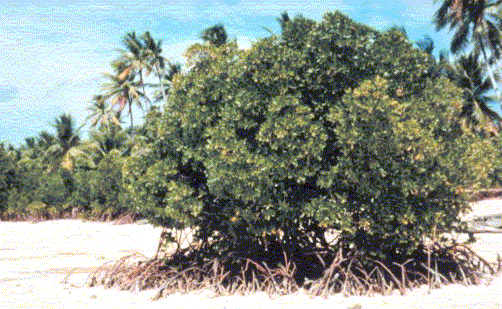Mangroves
Growing in the intertidal areas and estuary mouths between land and sea, mangroves provide critical habitat for a diverse marine and terrestrial flora and fauna and support a complex aquatic foodweb. They supply a number of natural resources, whilst the waters surrounding mangroves are a rich source of fish and shellfish. Mangroves also protect the coast by absorbing the energy of storm driven waves and wind and thus act as a stabilising factor for river banks and coastline. The only two yachts undamaged by Cyclone Tracey in Darwin in 1974 had sheltered in a mangrove creek. While providing a buffer for the land on one side, mangroves also interact with the sea on the other. Sediments trapped by roots prevent silting of adjacent marine habitats where cloudy water might cause corals to die. In addition, mangrove plants and sediments have been shown to absorb pollution, including heavy metals.
Picture courtesy of NOAA
In recent years, the pressures of increasing tourism activities have, in many regions (e.g Caribbean), led to the destruction of mangrove forests so as to provide land for the construction of tourist resorts and tourism-related development. Clearing mangrove forests makes the coast more vulnerable to erosion, destroys the habitat of many species and leads to the deterioration of surrounding waters and ecosystems as a result of the loss of the mangroves' buffering capacity and function.
Habitat restoration, especially for critical mangrove systems, is being investigated as a coastal management policy by a number of the National Estuaries Programs on the US Gulf Coast. As this technology is refined around the world, it offers promise for coastal tourism impact mitigation. For example, new marinas in the US and British Virgin Islands are being built with some attention to preserving existing mangrove stands-it would be a small step to seeking offsets for mangrove destruction in some areas, with restoration of equivalent resources in other areas.


